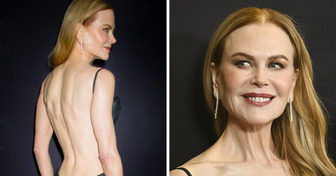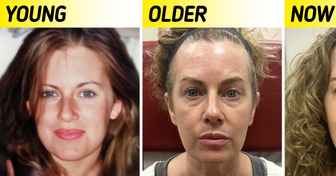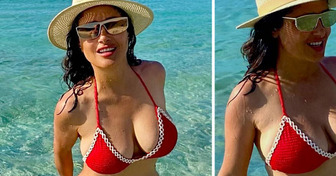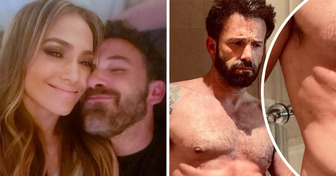I would appreciate if you would add this to the list. I am from Mauritius and here the subjects are like this:
1. Subjects in pre-primary schools: Learning to read and write.
2. Subjects in primary schools (compulsory): Arithmetics, English, French, History and geography, Science, Arts, Hindi/Urdu/Arabic/Catechesis/Mandarin (students should choose one of these languages).
3. Subjects in Secondary schools (O level, students have 3 compulsory subjects and should choose at least 5 optional) Mathematics/ French/ English(compulsory), Advanced mathematics, Literature (both English and French) Science (biology, chemistry and physics), Design and technology/communication, Arts, Social studies, Accounting, Economics, Commerce, Business studies, Food and nutrition, Travel and tourism, Fashion and design, Music, IT, Physical education, Hinduism, Hindi/Urdu/Arabic/Tamil/Telugu/Mandarin (students can choose one of these).
4. Subjects in secondary schools (A level, students have 3 main and 2 subsidiary subjects to choose): The subjects are the almost the same as for the O level, just with the addition of Further mathematics, Social science and some other subjects.
What Subjects Are Taught in Schools From All Over the World
A school is a place where most teenagers decide what they want to dedicate their lives to. But schools in different countries have a different approach to spotting kids’ talents.
Today Bright Side is going to tell you about subjects that kids from different countries study in schools.
USA
- Compulsory subjects in primary school are arithmetic, reading, and writing, introduction to natural sciences, and local history.
- Secondary school subjects include mathematics, language, natural sciences (combined chemistry, biology, and physics), social sciences (history), and physical education. Moreover, there is a wide choice of extra-curricular activities like psychology, forensics, journalism, rhetoric, wood-carving, pottery, cooking, and so on.
-
Compulsory subjects in high school are mathematics, literature, natural sciences (one year of chemistry, one year of biology, and one year of physics), social sciences (history and state structure), physical education.
There are also several optional subjects like acting, physical education, anatomy, statistics, computer science, environmental technology, foreign languages, painting, sculpture, photography, cinematography, theater, orchestra, dancing, computer graphics, web design, journalism, yearbook editing, woodworking, or car repair The list can vary depending on the school.
Israel
- The curriculum of primary school includes Hebrew, mathematics, Tanakh (Hebrew Bible), history, geography, nature studies, English, music, drawing, rhythmic, and physical education. There are optional subjects chosen by the teacher like robotics, tricks and circus art, theater, choreography, or veterinary studies.
- In senior high school, students choose the direction of their education by themselves. They can study foreign languages, chemistry, physics, biology, music, biotechnology, design, theater, criminology, psychology, economics, etc. Also, it’s possible to get a tourist service or accounting certificate together with a school diploma.
Japan
- In primary school kids study the Japanese language (not only in the modern form, but also medieval and ancient), calligraphy, poetry, arithmetic, nature studies, social studies (ethics, history, etiquette), music, visual arts, physical education, and household.
- In secondary school, they get additional subjects like IT, natural sciences (physics, chemistry, biology, geology combined together), life safety fundamentals, history, English (with a native speaker), and several special optional subjects.
- In senior high school, apart from the previous subjects, they have 2 specializations: either humanitarian or natural sciences. The main goal of studying is getting into university which is why pupils choose the rest of the subjects by themselves. For example, it can be agriculture, industry, commerce, fishing, medical training, welfare, foreign languages, and so on.
Saudi Arabia
- The compulsory subjects at Saudi Arabian schools include lessons in religion, mathematics, and natural sciences (biology, physics). But, humanitarian sciences like history or social studies are almost nonexistent in private schools.
Ireland
- There are only 2 compulsory subjects: English and mathematics (some schools have an additional third compulsory subject — the Irish language).
- The rest is optional. Pupils take examinations on the subjects that they are planning to connect their lives with. The choice is quite big — there are 34 available subjects. For example, accounting, business organization, management, music, drawing, household, IT, woodworking, foreign languages, agriculture, theater, music, and a couple of dozen other disciplines.
Australia
- In primary school, apart from basic subjects like arithmetic, native language, physical education, the environment, and creative lessons, kids are taught to give public speeches.
- In secondary school, English, mathematics, the theory of probability, computer literacy, social studies, history, geography, ecology, art (dance, drama, music, and drawing), physical training and science (including chemistry, physics, and astronomy) are compulsory.
- In senior high school, pupils study the basics of their future profession and are introduced to subjects like accounting, IT, economics, etc. — the choices are extensive. Moreover, those who study in the 11th-12th grades get access to internship programs in working companies. And right after graduation exams, they have an opportunity to get an entry-level job.
There is an interesting idiosyncrasy regarding PE lessons — usually, there is no gym in schools and lessons are held outside. If the weather is rainy, lessons get canceled. The students of senior level classes can take surfing lessons if their schools are located not far from the ocean.
Spain
- Primary education includes the Spanish language, literature, nature studies, physical education, mathematics, a foreign language, and an art subject, which is usually music that is taught at a high level. By the end of school, kids can play some musical instrument. Usually, it’s the flute because it’s easy to carry it.
- In secondary school, they get additional social sciences, geography, history, graphics and plastic arts, music and technology (the last 3 can be studied for one year each).
- In senior level classes, each pupil gets 3 extra subjects in one direction. There are a total of 4 directions:
- Humanitarian sciences
- Technology
- Natural sciences
- Art
China
- Compulsory subjects in primary school are mathematics, Chinese, a foreign language, and optional drawing, music, or physical education.
- At the secondary and senior levels, they get additional science (physics, chemistry, and biology combined together), social studies, computer skills, and computer science. The level of complexity, as well as the number of basic subjects, increases year by year, making Chinese schools one of the most difficult and psychologically pressing educational systems. By the way, we have an article about it.
Great Britain
- In primary school, kids study English, mathematics, history, geography, music, industrial technology, and art. The final list of subjects is formed by the parents.
- Later they get additional subjects like the basis of religion (they study ethics and views of all religions), geography, natural science, computer science, as well as numerous subjects that are chosen by students — for example, cooking, music, psychology, photography, dancing, drama, law, social security, accounting, art and design, science of the sea, travel and tourism, and so on.
Russia
- In primary school, kids study mathematics, nature studies, the Russian language, reading, a foreign language, drawing, music, physical education, and chess (an option that has appeared in many schools since 2018).
- The curriculum of the secondary school looks like this: the Russian language and literature, a foreign language, algebra, geometry, informatics, history, social science, geography, natural history, biology, physics, chemistry, life safety fundamentals, physical education, handcrafts.
- In senior high school, students get mechanical drawing, astronomy, and world art culture. In many schools, the 10th and 11th classes are divided into 4 specializations: humanitarian, technological, mathematical and social-economical. The amount of lessons on compulsory subjects is reconsidered in these classes. For example, a mathematical class will have more lessons in mathematics and physics, while there will be fewer literature lessons.
The system of education in Russia is unified — there are no personal curriculums available for pupils. However, there are schools and regions with additional subjects. For example, there are lessons of the native language and literature in the regions with another major nation. In some regions like Bashkortostan, where there are very unusual classes like beekeeping.
Which subjects do pupils study in the schools of your region? Which of these educational systems would suit you the most? Please tell us about it in the comments!
Comments
Related Reads
Mom Goes Viral as Her Behavior With Her Daughter, 7, Is Deemed Inappropriate

“Screams Desperation,” Nicole Kidman, 56, Stuns in a Risqué Dress, But People Say It’s Not Age-Appropriate

Zac Efron’s Appearance a Few Days Ago Leaves Fans Shocked and Worried

A Woman Used Botox Because She Wanted to Look Like Her Younger Self, and According to People Online She Succeeded

Model Lost Entire Lips in Pitbull Attack, And She Reflects on Her Recovering Journey

Miley Cyrus Causes a Stir by “Leaving Nothing to the Imagination” as She Wears an Extremely Revealing Dress

15+ Moms Who Didn’t Want Pets in the House but Now Love Them to Death

Jennifer Lopez Faces Backlash as Users Notice Something Unusual in Her Bikini Pics

A Detail Spotted on Salma Hayek’s Breasts Sparks Big Controversy, as She Celebrates 57th Birthday

Jennifer Lopez Sparks Controversy After Posting Candid Photos of Ben Affleck

Tom Cruise Deemed Unrecognizable in New Pics With Prince William, as Some Say He Had “Too Much Surgery”

A Girl Born Without Nose, Who Was Called “Voldemort”, Proved Everyone Is Beautiful in Their Own Way
